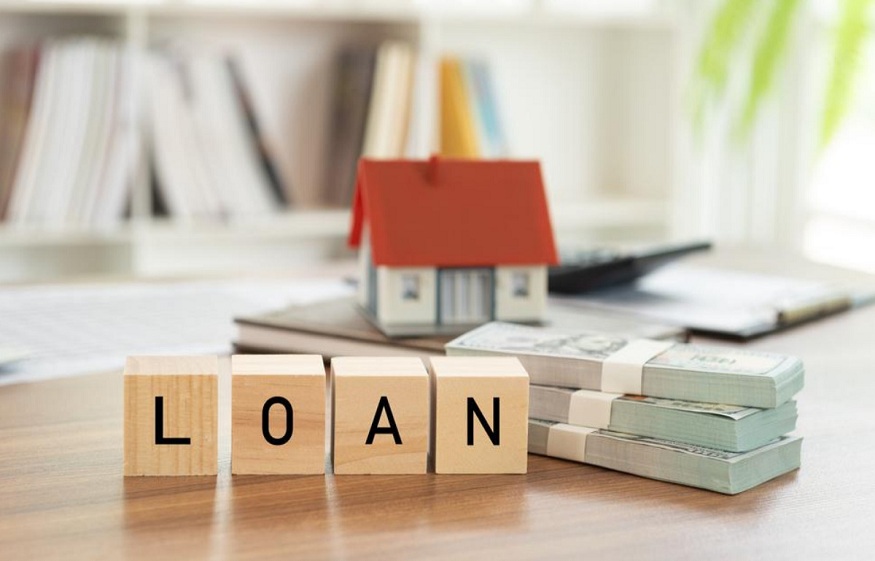There are many reasons why you might want to move. As a homeowner, you may have to make the decision to part with your main residence and find another one. In this type of situation, you can take out a bridging loan that will allow you to borrow the necessary amount while waiting for the sale of your property to be finalized. Depending on your financial situation, you have two options: the dry bridging loan and the back-to-back bridging loan.
How does the bridging loan work?
A bridging loan is a form of financing that allows you to become the owner of a new property before selling your current home. It is a short-term transition loan (usually no longer than two years), granted based on the value of your current property.
This type of mortgage loan allows you to obtain a cash advance between the purchase of a property and the sale of an old property. It is therefore particularly useful during a real estate purchase-resale transaction. The bank advances you a sum of money that you will repay once the sale is concluded.
The bridging loan aims to give you the time you need to find a buyer without having to rush the sale of your property or lower its price. The bridging loan thus ensures continuity between the sale of your current property and the acquisition of your new home. It is not subject to any early repayment compensation , under certain conditions.
In general, a bridging loan works like an in fine loan . In other words, you only pay the interest and borrower insurance premiums until your property is sold. The capital borrowed will be repaid when your home is sold.
What are the different types of bridging loans?
The bridging loan is an alternative when you own a property and you want to move to a new property, without having sold the first one yet. Depending on your financial situation, in particular the presence of outstanding loans, as well as the value of the new property to be purchased, two types of bridging loan are possible. The dry bridging loan and the backed bridging loan
What is a dry bridging loan?
A dry bridging loan is a type of bridging loan taken out on its own, without the addition of a complementary mortgage. It is possible if the sale of your current property is sufficient to cover the purchase price of your new property.
When you opt for a dry bridging loan, it is the only loan you obtain to finance the purchase of your new property. Its amount can represent up to 70% of the estimated sale price of your old property or 80% of the price agreed in a sales agreement already signed. The dry bridging loan therefore allows you to buy a property that costs less than your current home, unless you have a significant personal contribution to complete the financing.
The dry bridging loan is often used by those who have generally finished repaying the credit on their property and have sufficient savings to not need another loan. In other words, the sale of their property, added to their savings, allows them to fully finance the acquisition of a new home.
What is a back-to-back bridging loan?
The back-to-back bridging loan, also known as a coupled or twinned bridging loan, is a type of bridging loan that is combined with other financing such as a long-term property loan or even conventional loans (Action Logement loan, zero-rate loan ).
Considered the most common, this type of bridging loan is generally used when it is necessary to take out a loan to finance the acquisition of a property whose price is higher than that of the property you wish to sell.
This type of bridging loan offers the advantage of buying the home of your dreams without having to worry about budgetary constraints other than your eligibility and repayment capacity. In addition, the interest rates applied to the backed bridging loan are generally in line with those of the market.
However, obtaining a coupled bridging loan requires a complete file study, because it is partly similar to a classic mortgage. The bank will therefore examine in detail your income, your personal and professional situation as well as your debt ratio.
Please note that in this type of financing, the payments of your traditional loan and those of your backed bridging loan are combined to form a single monthly payment with a single lending institution.
Should you opt for a dry or backed bridging loan?
The choice between a dry bridging loan or a backed bridging loan will depend on your financial situation as well as the value of the property you wish to acquire. If the sale of your current home allows you to repay your current loans and fully finance the purchase of the new property, the dry bridging loan is the best option.
On the other hand, if the amount from the sale of your current property is not enough to cover the purchase of the new home, it will be necessary to take out a back-to-back bridging loan.
How to get the best bridging loan terms?
If you are looking for the bridging loan best suited to your situation with the best conditions and a favorable rate, it can be very useful to call on a broker specialized in real estate credit , such as Solutis. We work to enhance your file to present it in an optimal way and allow you to become a homeowner again as soon as possible.
In addition, you must meet certain conditions similar to those of a traditional mortgage application to obtain the best bridging loan terms, including a stable financial situation. Your income and expenses will be taken into account to assess your repayment capacity, as will your professional stability.

